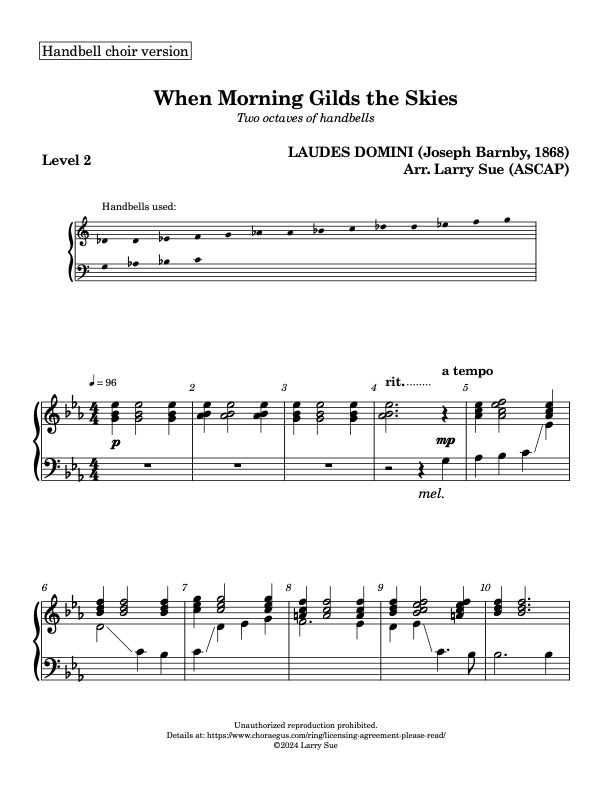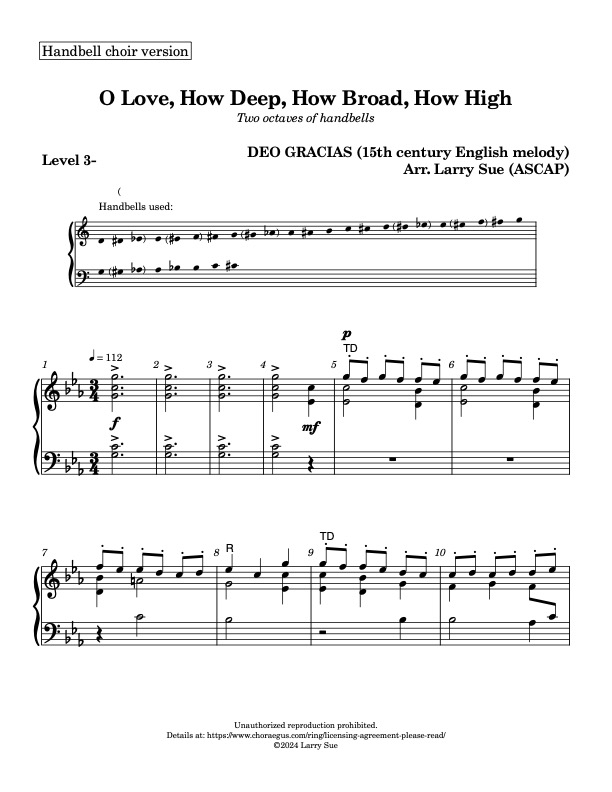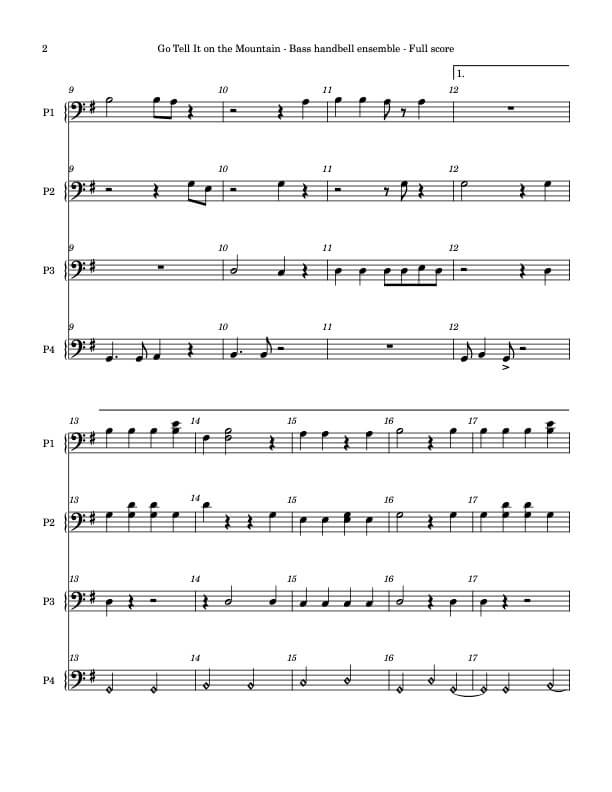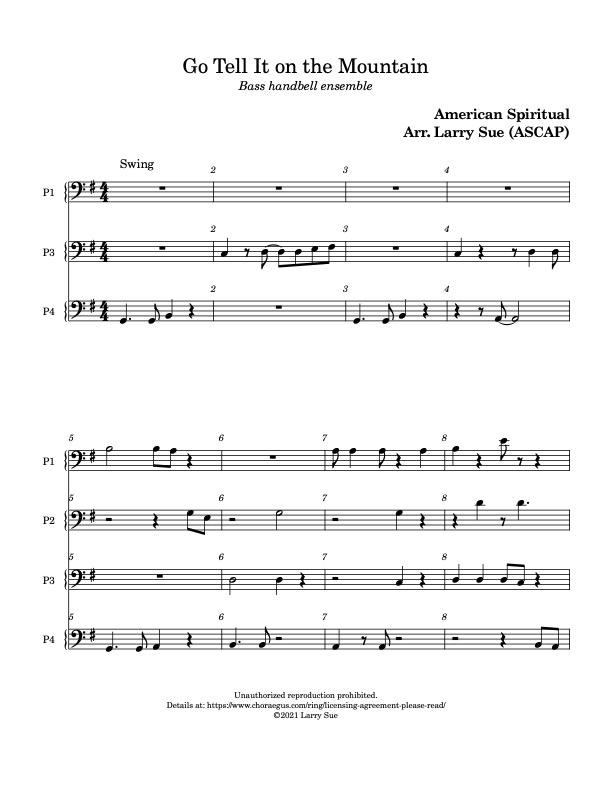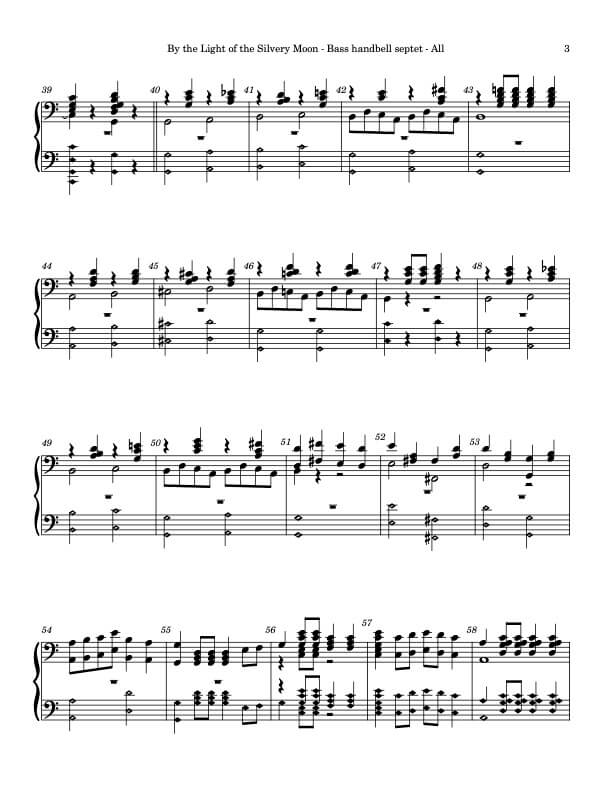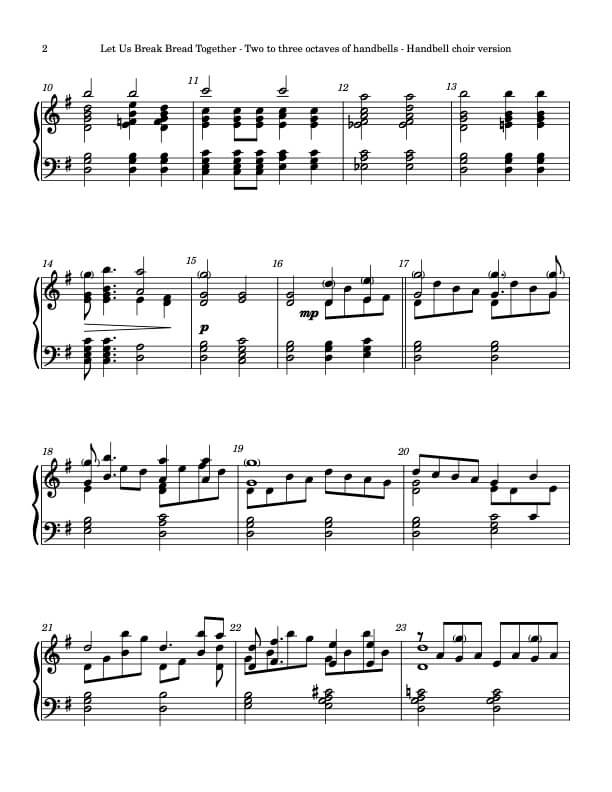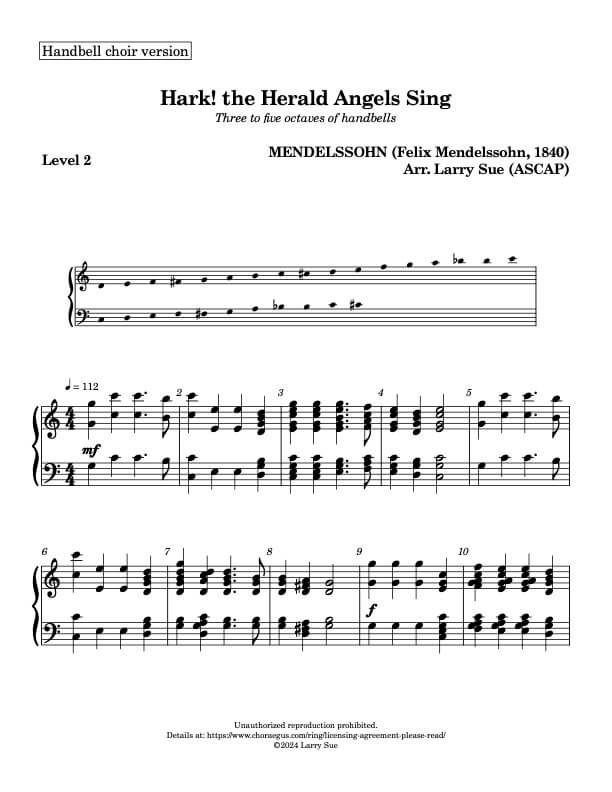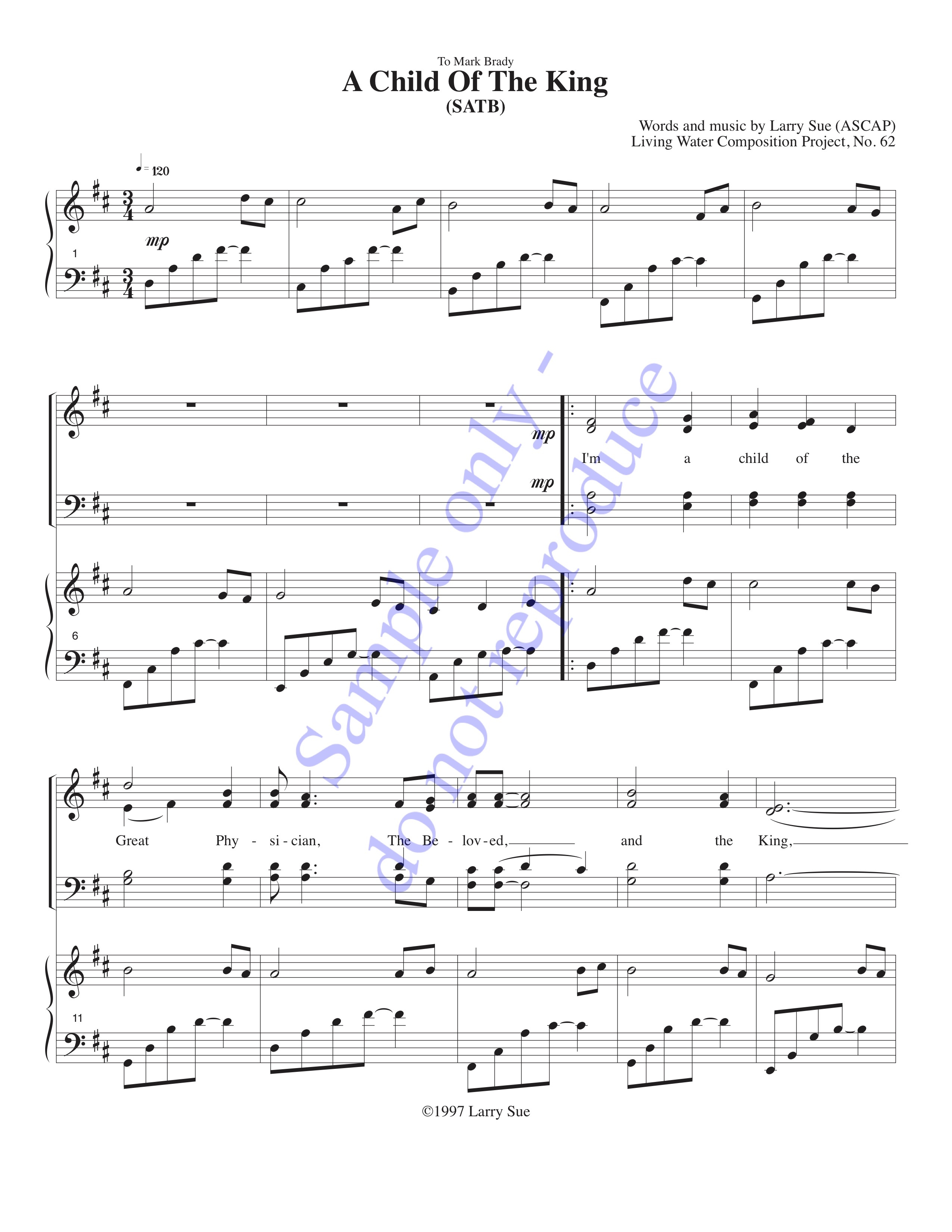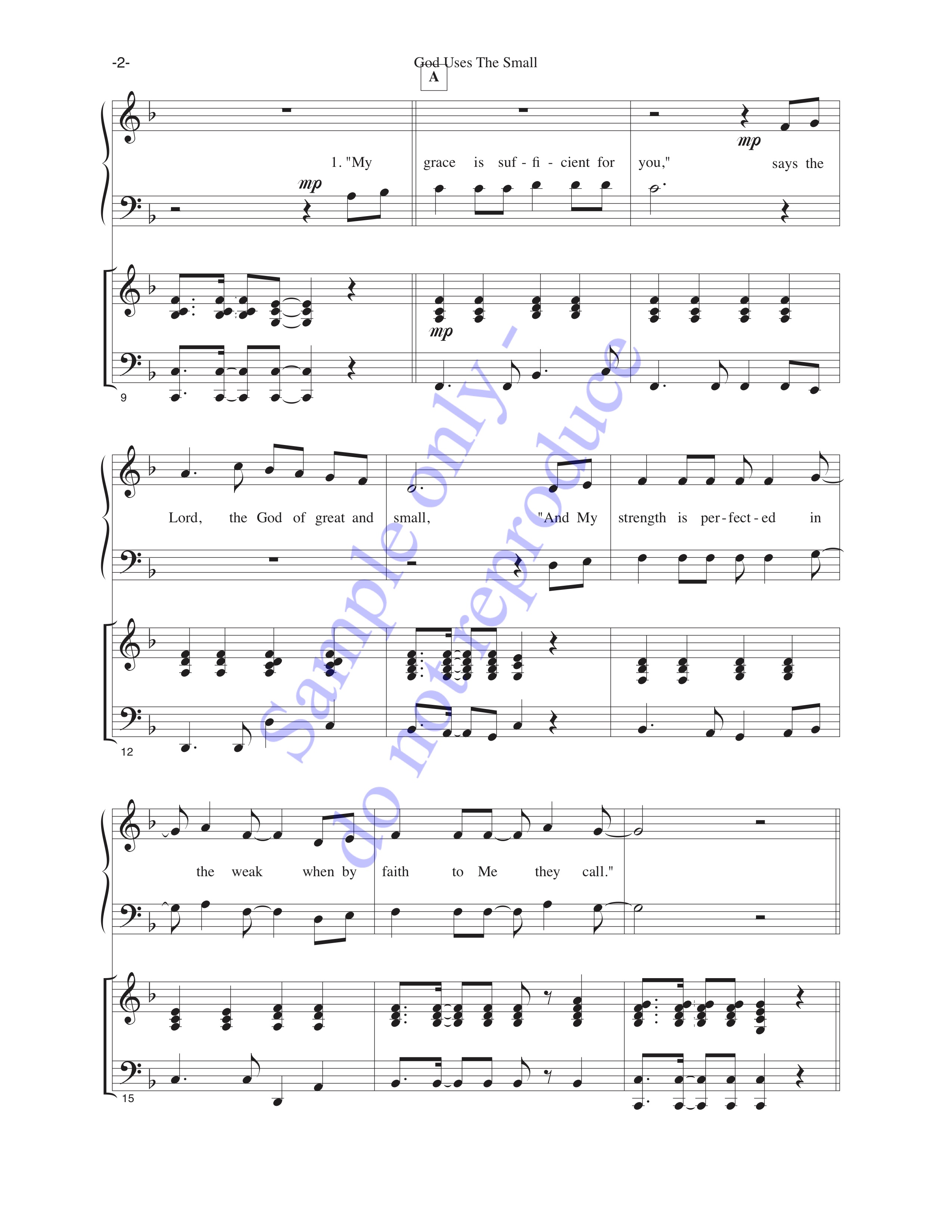Are you considering our eight-, twelve-, or sixteen-bell music, but appear to have more ringers than are needed to play? That’s a good problem to have, because it means you’re on the way to enjoying even more music! But if you have, say, nine ringers, that would appear to be too many for sixteen bells, and not enough for three octaves. fortunately, there are very workable solutions that will make it possible to expand gently and gradually while keeping your small ensemble music in your current repertoire.
First, a bit of background. We started with eight-bell music, and expanded by increments of four bells, because we were thinking in terms of four-in-hand ringers. So that led to pieces with twelve, then sixteen bells. Okay… perhaps it was selfishly motivated, since we both prefer four bells to two. We haven’t essayed twenty-bell pieces, because that number of notes sounds an awful lot like two-octave music (two chromatic octaves of bells equals twenty-five pitches). And finding five four-in-hand ringers in the same place at the same time can be a bit of a challenge!
If you have nine ringers, you can still play much of our music. There are two types of solutions, one for bells-only, and one for bells-plus-chimes. The bells-only solution assumes that you have at least three octaves of bells available, because if you’re playing a purely diatonic piece (i.e. no accidentals) the range of pitches needed would be something like C4-F6 or G4-C7.
And if you have ten ringers, you’ll just need to add two more notes. Once you get to eleven ringers, you’ll have the number of “standard” assignments for a three-octave set, so you can choose between playing regular handbell choir music or applying the ideas for nine or ten ringers.
Perhaps some of the following possibilities for nine ringers will work for you!
| Type of Score | Bells-Only | Bells + Chimes |
| 8-bell | Double notes in the original eight-bell score up or down an octave. In many pieces, you’ll have to decide who plays the highest and lowest notes, because a complete doubling will mean that you might be interested in having a duplicate G5 or G6. | Play as a double ensemble on duplicated bells and chimes, and add a couple of notes for the fifth person in one of the ensembles. |
| 12-bell | Double notes in the original twelve-bell score up or down an octave. For a twelve-bell score with range C5-G6, this will mean adding another six notes, probably D4-B4 or C4-A4. | Play as a double ensemble on duplicated bells and chimes. If you want to have all twelve bells and all twelve chimes played, then three of the positions can be given to four-in-hand ringers; a convenient way to do this is to have one of the ensembles be a four-in-hand trio, with the other as a sextet. |
| 16-bell | Double notes in the original sixteen-bell score up or down an octave (in practice, doubling down usually sounds a bit better). Generally, this will require a three-octave set of bells. | Play as a double ensemble. As with twelve-bell music played in this way, you can choose either to leave some notes unassigned, or to have your four-in-hand ringers play more bells or chimes. |


